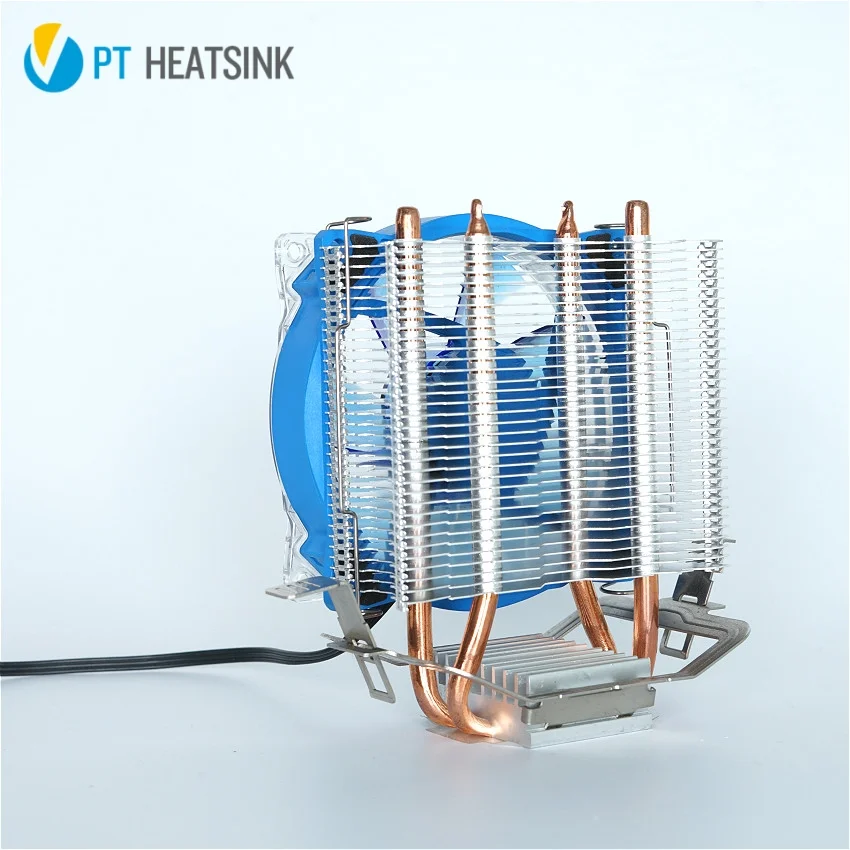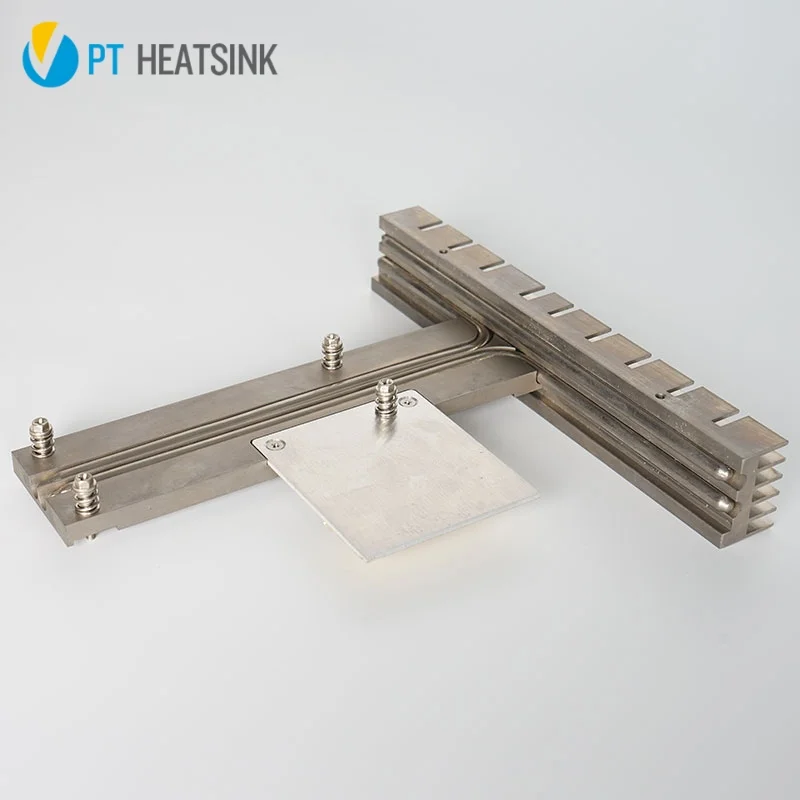
In today’s tech-driven world, it’s crucial to keep electronic devices cool. Whether it’s your laptop, smartphone, or the servers that drive the internet, managing heat is key to ensuring operations and longevity. This article will explore the realm of heat pipe technology, detailing its functionality, advantages, and its significant role in maintaining our gadgets’ optimal temperature.
1. Understanding Heat Pipe Technology
A heat pipe serves as an effective tool for transferring heat away from hot electronic components. It acts as an efficient pathway for heat transfer, swiftly moving heat from one location to another. This process prevents overheating of electronics, which can lead to performance issues or even damage.
A. Fundamental Concepts of Heat Pipes
Heat pipes operate by utilizing a liquid that vaporizes under high temperatures and condenses back into liquid form when cooled down. Here’s how it functions:
- Evaporator Segment: Located at the hot end of the heat pipe where the liquid transforms into vapor due to heat.
- Adiabatic Segment: The part through which vapor travels towards the opposite end.
- Condenser Section: This is where the vapor cools down and changes back into liquid form, releasing heat into the surrounding area.
B. Comparison with Cooling Methods
When comparing heat pipes to cooling methods such as extrusion, die casting, and skiving, it’s evident that heat pipes are more efficient and versatile. They excel at transferring heat over long distances with minimal temperature variation, making them ideal for high-performance electronics.
2. The Mechanics of Heat Pipe Technology
A. Structure and Components of Heat Pipes
Heat pipes consist of three parts:
- Evaporator Section: This part absorbs heat.
- Adiabatic (Transport) Section: The section for moving heat.
- Condenser Section: The component that releases the heat.
B. Phase Transition Process
Heat pipes operate using a phase transition process where the liquid evaporates at the hot end and condenses at the cooler end. This continuous cycle ensures efficient movement of heat.
C. Materials Used in Heat Pipes
Typically crafted from metals like copper or aluminum due to their heat conductivity, heat pipes house a working fluid such as water or ammonia that evaporates and condenses to facilitate the effective transfer of heat.
3. Benefits of Heat Pipe Technology
A. Enhanced Heat Transfer Efficiency
Heat pipes excel at transferring heat from one location to another, surpassing the capabilities of traditional materials. This heightened thermal conductivity stands out as a significant benefit.
B. Effective Heat Dissipation
The efficiency of heat pipes in dissipating heat is remarkable. They can transfer large amounts of heat with minimal temperature differentials, which is vital for maintaining optimal temperatures in high-performance electronic devices.
C. Natural Cooling Abilities
Heat pipes operate without the need for energy or moving components. This inherent cooling capability makes them dependable and easy to maintain.
D. Lightweight Construction
Due to their exceptional efficiency, heat pipes can be designed in smaller and lighter configurations compared to other cooling methods. This feature is particularly advantageous for electronics that are continuously evolving towards compactness and increased power.
E. Durability and Longevity
With a proven track record of reliability, heat pipes can endure extended periods without requiring maintenance. This reliability makes them an ideal choice for applications where uninterrupted functionality is paramount.
4. Design Aspects to Consider when Implementing Heat Pipe Systems
A. Material Selection for Optimal Thermal Conductivity and Performance
Selecting materials for constructing the heat pipe plays a crucial role in determining its performance levels. Copper and aluminum are favored materials due to their efficient heat conduction properties and durability.
B. Heat Transfer Methods
The effectiveness of a heat pipe relies on its ability to move heat through conduction and convection. Engineers create heat pipes with the goal of optimizing these methods.
C. Surface Area and Fin Design
Enhancing the surface area of a heat pipe aids in the dissipation of heat. Fins are commonly attached to boost the surface area and enhance cooling efficiency.
D. Incorporation with Thermal Management Elements
Heat pipes frequently collaborate with other components such as thermal interface materials (TIMs) and cooling fans. Ensuring compatibility among these elements is crucial for achieving optimal performance.
E. Tailoring for Specific Applications
Heat pipes can be tailored to suit specific requirements, making them versatile for a wide array of uses from small devices to large industrial equipment.
5. Applications of Heat Pipe Technology across Various Sectors
A. Energy Storage
Heat pipes play a crucial role in managing the heat generated by batteries and other components in energy storage systems, ensuring safety and efficiency.
B. Solar Inverters
Used to convert DC power from panels into AC power, solar inverters benefit from heat pipes that help maintain their coolness, thereby preserving their efficiency and longevity.
C. Automobiles
With electronic systems producing heat in modern vehicles, the use of heat pipes helps in keeping these systems cool for reliable performance.
D. Computer Servers and Data Centers
Servers and data centers generate a large amount of heat. Heat pipes are essential for managing this heat, preventing overheating, and ensuring optimal performance.
E. Artificial Intelligence and Telecommunications
Efficient cooling is crucial for AI and telecommunications equipment to handle data processing tasks effectively. Heat pipes play a key role in maintaining the temperature balance in these systems.
F. Medical Equipment
Medical devices such as imaging equipment and ventilators rely on cooling solutions to ensure precise and uninterrupted operation. Heat pipes are instrumental in providing the necessary cooling support.
6. Upcoming Trends in Heat Pipe Technology

A. Advancements in Materials and Design
Ongoing research on materials and innovative manufacturing methods is driving the development of more effective and compact heat pipes. Breakthroughs such as graphene and 3D printing show potential for future applications.
B. Integration with Emerging Technologies
Heat pipes are now being incorporated into technologies like IoT-enabled devices to deliver real-time thermal management capabilities and predictive maintenance features.
C. Focus on Sustainability and Environmental Concerns
With a growing emphasis on eco-friendly solutions across industries, sustainable manufacturing processes and the use of recyclable materials are increasingly prominent in the production of heat pipes.
Conclusion
Heat pipe technology is revolutionizing the way we manage heat in electronic devices. Its high efficiency, reliability, and versatility make it an essential tool for modern thermal management. PTHeatsink stands out as a leader in providing advanced, customized heat pipe solutions that cater to a wide range of industries. As technology continues to evolve, staying informed about the latest advancements in heat pipe technology will ensure that devices remain cool, efficient, and long-lasting.
Frequently Asked Questions
1. What exactly is heat pipe technology?
Heat pipe technology involves the utilization of a pipe filled with a working fluid that evaporates and condenses to efficiently transfer heat.
2. How does a heat pipe function?
A heat pipe operates by absorbing heat at one end, known as the evaporator, where the internal working fluid evaporates. The resulting vapor travels to the other end, called the condenser, where it releases the heat and transforms back into a liquid state.
3. What are some advantages of employing heat pipe technology?
Heat pipes provide high thermal conductivity, effective heat transfer, passive cooling capabilities, compact and lightweight design, as well as reliability in operation.
4. Which materials are typically utilized in constructing heat pipes?
Heat pipes are commonly crafted from copper or aluminum and house working fluids such as water, ammonia, or specialized liquids.
5. How do heat pipes stack up against other cooling solutions?
Compared to other cooling methods, heat pipes demonstrate higher efficiency and versatility in transferring heat across longer distances with minimal temperature differentials.
6. In which industries is the use of heat pipe technology prevalent?
Sectors like energy storage, solar inverters, automotive manufacturing, computing systems, artificial intelligence applications, telecommunications infrastructure, and medical device production frequently leverage heat pipe technology.
7. Can customizations be made to tailor heat pipes for specific applications?
Yes, heat pipes can be customized to meet specific thermal management requirements, making them suitable for a diverse array of applications.
8. What factors should one consider when designing a heat pipe system?
Key considerations include thermal conductivity, heat transfer mechanisms, surface area, fin design, and compatibility with other components of thermal management systems.
9. How long is the typical lifespan of heat pipes?
Heat pipes are renowned for their durability and longevity, often remaining operational for years without the need for maintenance.
10. What are some of the advancements in heat pipe technology?
The latest trends in heat pipe technology encompass innovations in materials used, integration with smart technologies, and the adoption of sustainable manufacturing practices.
11. What varieties of heat pipes does PTHeatsink manufacture?
PTHeatsink offers a range of heat pipes tailored to meet the needs of various industries and applications.
12. How does PTHeatsink ensure the quality of its heat pipe products?
By conducting rigorous testing, inspections, and adhering to stringent quality standards.
